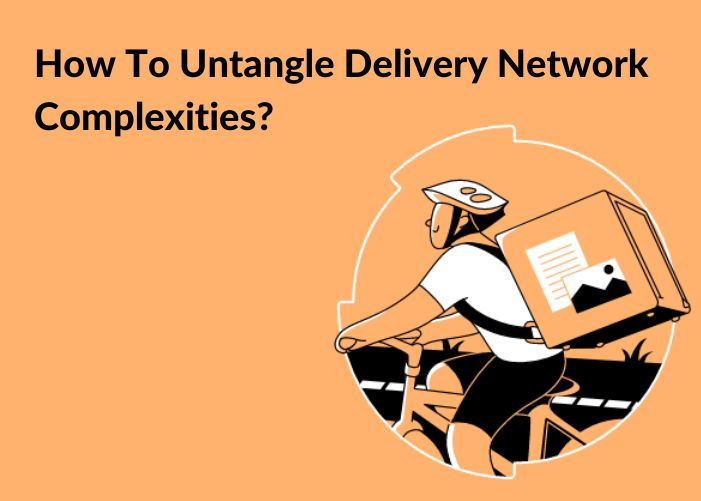1) What does “Dispatch Management” mean?
Today’s customer is vastly different from just a few years ago. The rapid growth of Ecommerce and the “Amazon-ization” of home delivery (Same-day, 24-hr) has spoilt the customer for choice! He wants options, choices, speed, free delivery…well, the list goes on!
Additionally, your customer wants to know everything about his order at all points i.e. where it is, ETA, any possible delays, what if he makes a change in his delivery window (etc.)
However, offering customers this plethora of convenience has made order delivery and it’s tracking a complex and challenging task. It requires constant focus, deep resources, and the use of modern tech tools.
How, then, can a retailer or the logistics company not only achieve a successful and profitable delivery operation but also keep their customer updated at all times on the sequence of activities that are implemented chronologically from the moment that an order is placed?
Answer? Via Dispatch Tracking and its management.
“Dispatch”, by itself, is the process of allocating resources (workers, drivers, vehicles, packaging materials, and services) that manage goods transportation and delivery efficiently. It sits at the very core of an optimized order-fulfillment experience.
2) Dispatch Management: Why is it increasingly important?
Well, you already have an efficient delivery operation. Why then, you may ask, should you invest more time, money, and resources into dispatch management? It’s all under control, right?
~~ Changing Customer Expectations ~~
Today’s customers expect their orders (especially, online orders) to be delivered ASAP. With growing Ecommerce, delivery companies and packing departments have come under increasing pressure. To fulfill customer expectations, you must have an efficient dispatch process.
But, rapidly evolving customer demands and forever changing trends mandate that efficient dispatch management is becoming increasingly important for running a profitable business operation.
Here are some leading reasons:
i) Same-day delivery: Needless to say, we love receiving our parcels immediately! Same-day, Next-day, 30-min groceries…delivery times in today’s times were unheard of even a decade ago!
Not only are customers used to these speedy delivery times but as a seller, you have to offer it to remain competitive.
Achieving such short delivery cycles make it even more important to have effective dispatch management. Without it, not only will your managers be unable to schedule the required shifts for skilled workers but there won’t be a seamless delivery operation – this will hamper your ability to get that order out the warehouse door in time.
ii) Constant pressure on margins: We live in an age of intense competition! Innovation is short-lived, technology proliferation is rapid, and options and substitutes are aplenty! Thousands of competitors offer the same products that you do. The battle for gaining customers and retaining market share is frenetic.
The intensity of this competition exerts constant pressure on margins. Allocating a disproportionate amount of funds toward quick deliveries will be self-defeating. An optimized dispatch management system will reduce delivery costs and delivery times.
~~ An efficient dispatch system is the bedrock of a successful delivery operation. It reduces time, money, and errors. Without optimized dispatch and tracking solutions, you will not achieve logistical excellence ~~
iii) Driver attrition: Common statistics show that driver attrition is between 33%-50% annually. Unfortunately, businesses also tend to ignore how important good quality delivery drivers are to the success of a delivery operation!
Efficient dispatch management identifies good drivers, develops an effective compensation program, and ensures that they turn into long-term assets for the company. It optimizes work hours, provides drivers with requisite rest periods, and places importance on driver requirements.
3) Dispatch management: key steps
A dispatch operation combines several important steps, which vary based on your business setup, your 3PL (etc.).
Some common steps are given below:
i) Order processing: Receiving, verifying, and processing order details. Involves inventory audits and readying the delivery for dispatch.
i) Packing: After order processing is complete, the goods are packed in suitable boxes and containers that prevent damage during transit.
ii) Labeling: Labels with key information (customer address, mode of transit, special instructions) are stuck on the cartons.
iii) Selecting the carrier: The shipping company or carrier is chosen. Criteria include delivery address, shipping mode, timeline (etc.).
iv) Transporting the parcels: The goods are transported to the 3PL warehouses, or even direct-to-consumer, based on the carrier/transportation method.
v) Delivery tracking: Right across the dispatch process, the delivery is tracked via a tracking number. This enables the sender and customer to track its movement and ETA.
vi) Final delivery: Shipment delivery at the recipient’s address. Completed by the delivery person. Delivery confirmation via an e-signature, photo, and barcode scan as proof of delivery.
3) What is delivery tracking software?
As mentioned earlier, “goods dispatch” is the process that sends products to their end destination.
When a parcel is dispatched, the order delivery has begun from its place of origin and begins its journey to its end destination. Depending on the mode of transport, this could mean goods being loaded on a van, train, ship, or plane.
Once dispatched and en route, the order needs to be tracked as it goes through its paces, including numerous delivery zones and pit stops. As mentioned earlier, this has become all the more critical in modern times due to several reasons including the pressures of on-time delivery exerted by ever-demanding customers and increasing competition.
This is where the use of delivery tracking software is imperative, with powerful inbuilt tools such as delivery tracking. It captures all dispatch-related information and makes it available to all stakeholders through cloud servers, data repositories, and real-time alerts.
This ensures there is complete transparency in the end-to-end operations involved in dispatching a product from its place of origin (e.g. the warehouse or factory of the manufacturer) to its end-user (e.g. an online shopper)
From an operational perspective, it ensures coordination between dispatchers, drivers, and available resources (e.g. fleet vehicles, packing services, and materials). In doing so, it also streamlines processes and resource consumption across the supply chain.
Conclusion: As is evident, dispatch management forms part of the core foundation of a successful delivery operation. Modern tools, such as dispatch tracking and delivery software, are critical-to-success in the modern world.



